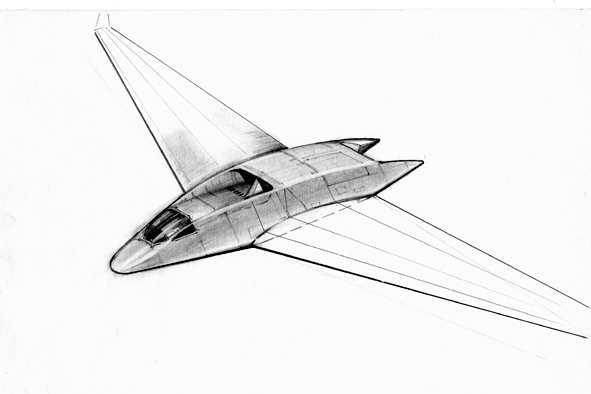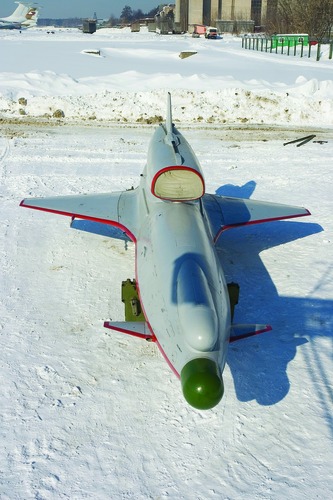I think the real problem was that the military was put in a position where they realised they were well behind in the game.
Militarys' around the world have always been caught with their pants down at the start of a conflict they were really not ready for... it is part of war that you surprise your enemy.
The military was put in the uncomfortable position where they realised they needed better C4IR capabilities and they looked at what the best equipped armed forces around the place were using, and it was UAVs... little remote control planes that seem so simple they don't even have pilots.
The problem was that their own MIC had only dabbled in that technology because in the past they just looked at those model aircraft and scoffed at airshows and exhibitions.
Now they needed to incorporate them into their armoury and they really knew very little about them.
They didn't know what they could or couldn't do and they didn't really know what they wanted.
As Vlad has mentioned some of the early Russian UAVs used cheap unstabilised cameras that couldn't give a good view and so were useless.
Replacing the camera with a much better quality camera and putting a stabilisation system in the craft or using digital stabilisation on the camera is not hard, but it is also not cheap.
Also the fact that GLONASS was not 100% even 2 years ago and isn't even perfected yet, and just as bad commercial GLONASS receivers are not easy to come by and are not cheap either is another problem that can only be solved with time and money.
Money which is being spent, but the fact is that if you had Russian UAVs operating 5 years ago that were as good as the Israeli UAVs they would be using GPS, which I doubt the Russian military would be happy with.
At the end of the day it is hard to point the finger and place blame anywhere because it was everywhere and given the situation understandible.
Without the conflict in South Ossetia the Russian AF might still not care about UAVs and there would be no emergency purchase of Israeli UAVs or centres set up to test and evaluation and create manuals and training documentation for UAV use within the RuAF. In a way the Russian AF should be thankful for that impulsive idiot in Georgia.
The simple facts of the matter is that an area of technology that was lacking before in the Russian military, with only the Russian Army artillery regiments really using them for spotting, which is quite understandable as the Russian Army has often expected to fight without air support... hense they have tactical rockets like Tochka-U and Iskander-M (Tender-M) to do the work that in the west would probably be achieved with an F-16 with a LGB.
Adding UAVs to the airforce, army and no doubt navy as well will expand their capabilities and reduce the danger to personel in dangerous airspace.
@Russian Patriot, things are not perfect with Russian UAVs of course, just because a company has a website and a design with pictures and video of it flying doesn't mean the SYSTEM is OK. It might have a really badly designed control system that is hard for the average soldier to use properly. If it works OK there is still the problem of production and even deployment. Some little 5 man company sets up a website, puts a plane one of them has made together with some cameras and a computer system to back it up and then offers the final product to the military... if the military want it then you have the problem of... we want 500 complete systems please. Then even if you can deliver that number of systems, you get the call that says that some Siberian unit is having trouble using your UAV design, can you send some specialists to go and have a look. For the next 5 days you get 400 calls wanting support and problem solving.
Getting something that works is the start of the problem...

Of course if the design is simple enough then it should be easy for other technical specialists to fix and for any factory making small aircraft to build in large numbers.
Needless to say now there is money and where there is money there will be products.
The only blame I would direct would be at the General or whatever that stated that they had to get Israeli UAVs because Russian ones were all rubbish.
They had only just decided they needed UAVs and they had looked at what was available and didn't like what they saw.
That is fine, but what he should have said was that UAV development in Russia was not mature and that the Russian Armed forces will train and learn to use UAVs using Israeli UAVs because in Israel a UAV is a functioning part of their military so their designs meet the needs of a military. Russian UAVs are generally scratch built model aeroplanes designed for what the designers think the military might need, whereas the Israeli designs are designed to meet Israeli military needs.
The real difference is that the Israeli military has experience with UAVs and knows what it needs and what it doesn't and there has been time and communication and no doubt dead ends and mistakes and other experiences on the part of the designers and the military to get the military what it needs.
Russia has largely skipped that phase and there is no need to apportion blame for not having to skip that phase.






